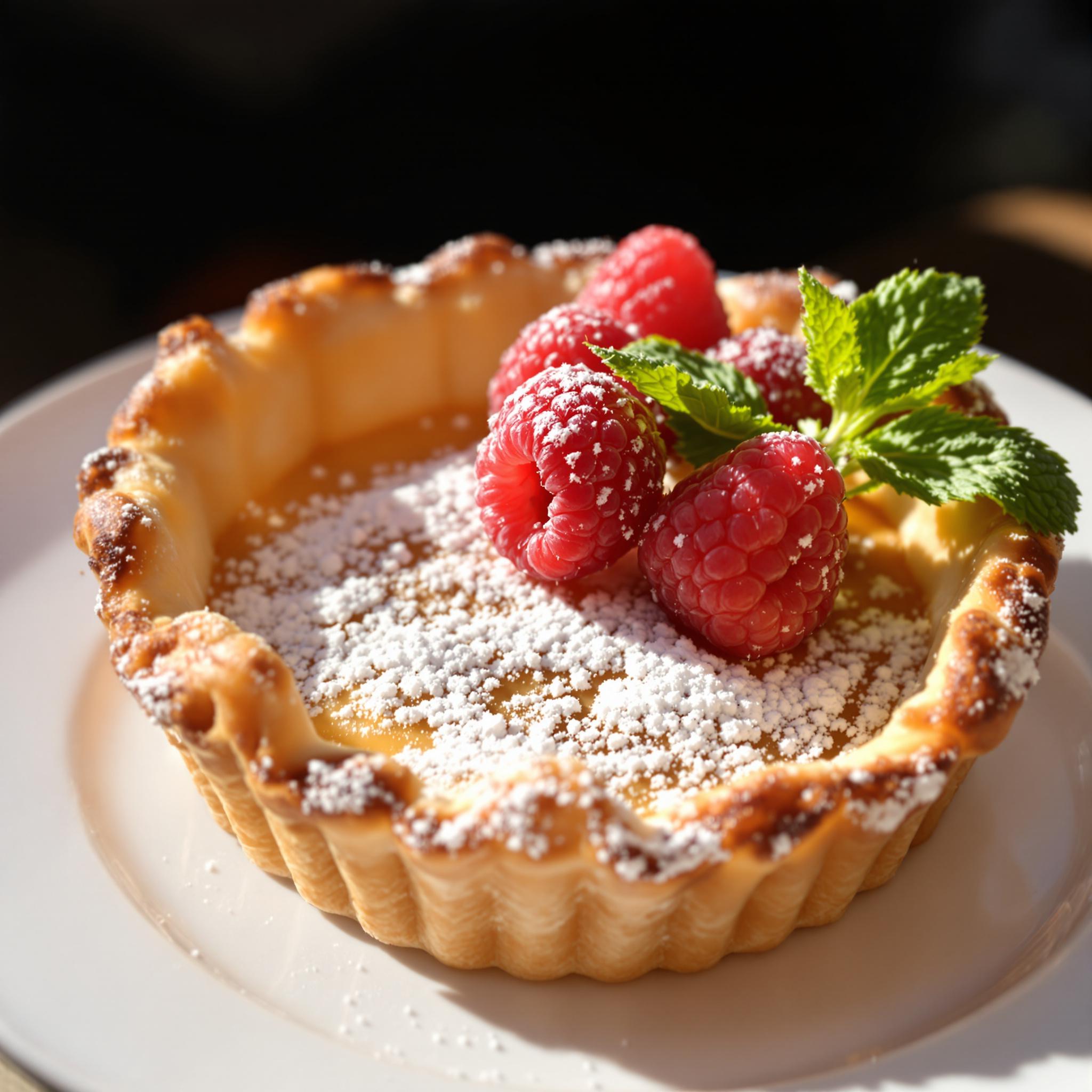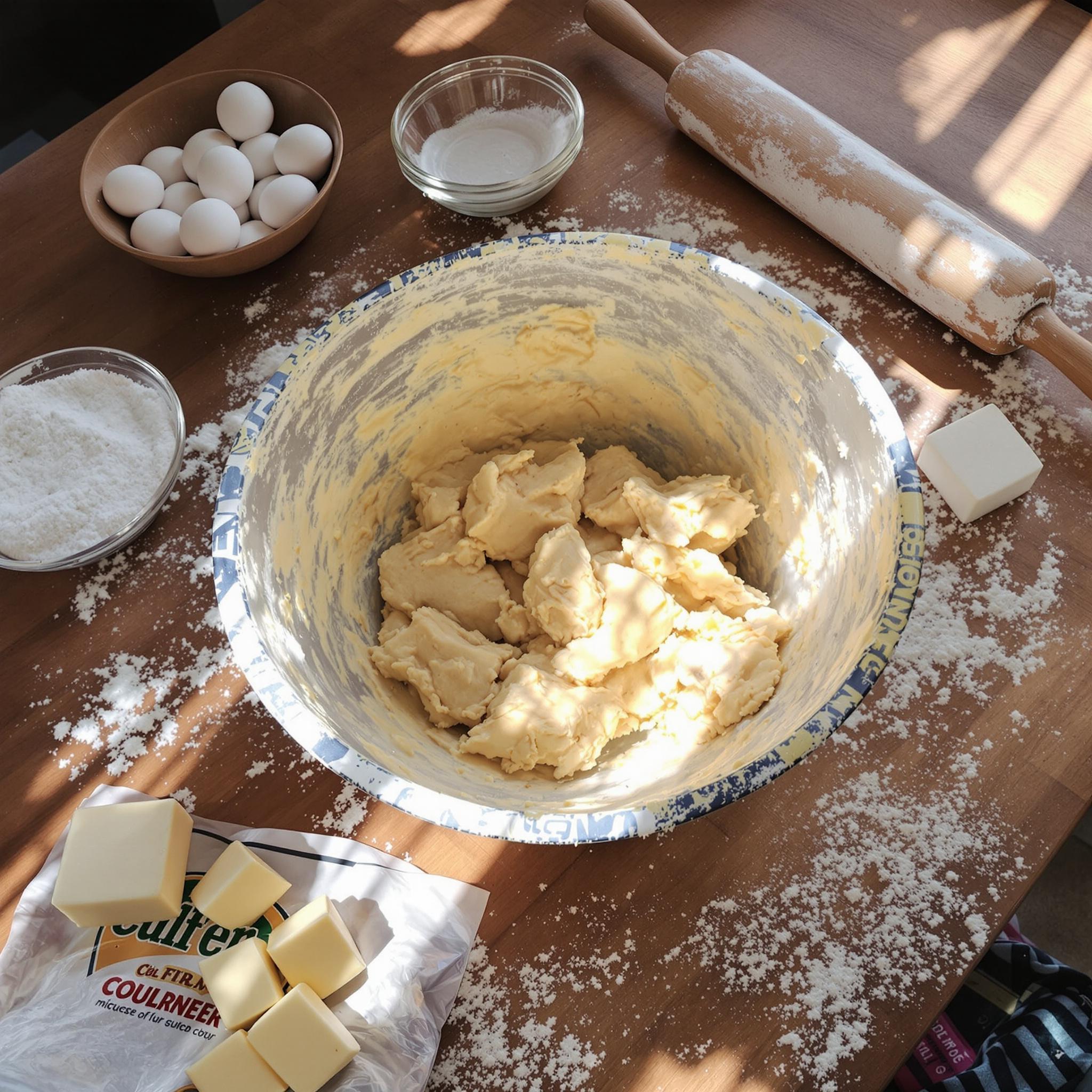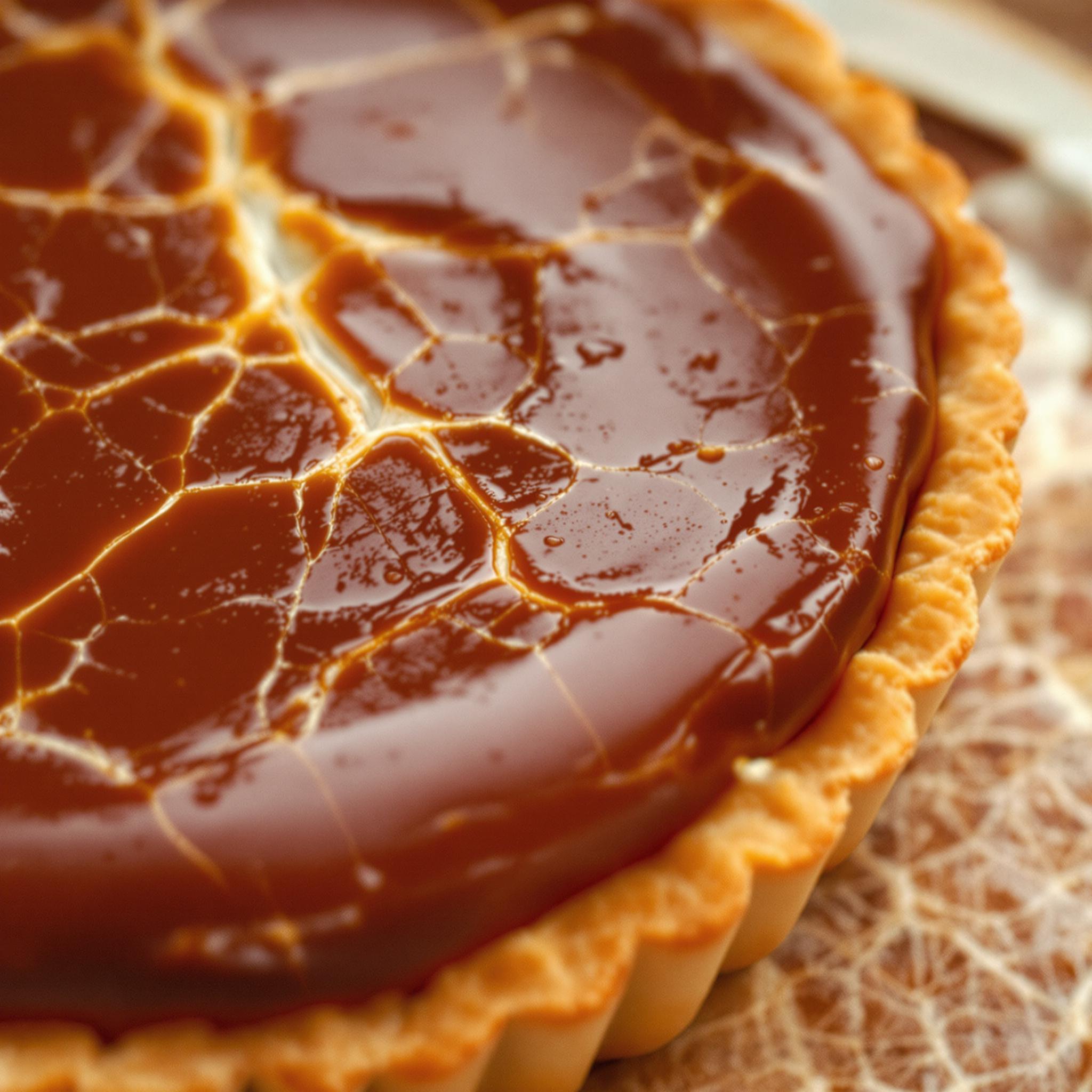
Introduction to Pâte Sucrée: A Sweet Treat for Every Occasion
Pâte Sucrée, also known as sweet tart dough, is a classic French pastry base that’s perfect for tarts, pies, and more. This buttery, crumbly crust has been a staple in my kitchen for years, and I absolutely love how versatile it is. Whether you’re making a simple fruit tart or an elegant dessert for a dinner party, this recipe never disappoints. The aroma of butter and sugar mingling in the air while it bakes always brings a smile to my face—and I can’t wait for you to experience it too!
The Origins of Pâte Sucrée: From France to Your Kitchen
This sweet shortcrust pastry hails from France, where it’s been used for centuries as the foundation for countless desserts. Traditionally, it was crafted by skilled bakers to complement fillings like creamy custards or fresh fruits. Over time, modern variations have emerged, incorporating flavors like almond extract or citrus zest. I first tried making Pâte Sucrée during a baking class years ago, and it quickly became my go-to for any tart-based dessert. Its rich history and timeless appeal make it a must-try for anyone who loves baking.
Why You’ll Love This Sweet Shortcrust Pastry Recipe
There are so many reasons to fall in love with Pâte Sucrée. First, its delicate texture melts in your mouth, creating a perfect balance with whatever filling you choose. Second, it’s surprisingly easy to make—even if you’re new to baking! Plus, the ingredients are pantry staples, so you won’t need to rush to the store. Finally, this recipe is incredibly forgiving, meaning even if you overmix or roll it out unevenly, it still turns out delicious.
Perfect Occasions to Prepare Sweet Tart Dough
Pâte Sucrée is ideal for special occasions like birthdays, holidays, or brunch gatherings. But honestly, I find myself making it just because—it’s that good! Pair it with seasonal fruits for summer picnics or fill it with chocolate ganache for Valentine’s Day. It’s also a fantastic option for tea parties or cozy nights in with family.
Ingredients for Pâte Sucrée
- 1 ½ cups all-purpose flour
- ½ cup unsalted butter, chilled and cubed
- ½ cup powdered sugar
- 1 large egg yolk
- 1 teaspoon vanilla extract
- A pinch of salt
Substitution Options for Sweet Tart Dough
- For gluten-free options, use almond flour or a gluten-free flour blend.
- Swap granulated sugar for powdered sugar if needed.
- Use coconut oil instead of butter for a dairy-free version.
- Add lemon zest or almond extract for a flavor twist.
Preparation: How to Make Pâte Sucrée Step by Step
Step 1: Combine Dry Ingredients
Start by sifting the flour and powdered sugar into a mixing bowl. This step ensures there are no lumps and gives your dough a smooth texture. Add a pinch of salt to enhance the sweetness later on. As you whisk these dry ingredients together, imagine the fragrant cloud of powdered sugar gently rising—this is where the magic begins!
Step 2: Incorporate Chilled Butter
Next, cut the cold butter into small cubes and add them to the dry mixture. Using your fingertips or a pastry cutter, work the butter into the flour until the mixture resembles coarse crumbs. The key here is keeping everything cold; warm butter can make the dough too soft. Pro tip: Chill your hands under cold water before handling the dough to prevent melting.
Step 3: Add Egg Yolk and Vanilla
Now comes the fun part—adding the egg yolk and vanilla extract. Mix these wet ingredients into the crumbly dough until it starts to come together. At first, it might seem crumbly, but don’t worry! Gently knead it with your hands until it forms a cohesive ball. The scent of vanilla will fill your kitchen, making it impossible not to sneak a taste.
Step 4: Rest the Dough
Once your dough is ready, flatten it into a disc, wrap it in plastic wrap, and let it rest in the refrigerator for at least 30 minutes. Resting allows the gluten to relax, ensuring your crust bakes evenly without shrinking. While it chills, take a moment to admire your handiwork—you’ve just created the base for something truly special.
Chef’s Tip for Perfect Pâte Sucrée
To achieve an extra-flaky texture, grate frozen butter directly into the flour mixture instead of cutting it in. This technique creates layers within the dough, resulting in a lighter crust.
Time Required for Pâte Sucrée
- Prep Time: 15 minutes
- Resting Time: 30 minutes
- Cooking Time: 15-20 minutes
- Total Time: About 1 hour
Nutritional Information for Sweet Tart Dough
Per serving (makes 8 servings):
– Calories: 180
– Protein: 2g
– Fat: 10g
– Carbohydrates: 20g
Extra Information: Did You Know?
Pâte Sucrée literally translates to “sweet dough” in French, but its name doesn’t do justice to its incredible versatility. It pairs beautifully with both sweet and savory fillings, making it a true culinary chameleon.
Necessary Tools for Making Sweet Tart Dough
- Mixing bowls
- Pastry cutter or fork
- Rolling pin
- Tart pan or pie dish
- Parchment paper
Storage Instructions for Pâte Sucrée
After baking, allow your Pâte Sucrée to cool completely before storing. For short-term storage, keep it in an airtight container at room temperature for up to two days. If you plan to store it longer, wrap it tightly in plastic wrap and freeze for up to three months. To reheat, simply place it in a low oven for a few minutes to restore its crispiness.
When freezing unbaked dough, shape it into a disc, wrap it well, and label it with the date. When you’re ready to use it, thaw it in the fridge overnight before rolling it out.
If you’ve already filled your tart, avoid refrigerating it unless necessary, as moisture can soften the crust. Instead, cover it loosely with foil and enjoy it fresh!
Tips and Tricks for Better Results
- Always chill your dough before rolling it out to prevent shrinkage.
- Use a light touch when kneading to avoid developing too much gluten.
- Blind bake the crust with parchment paper and pie weights to ensure it stays flat.
Serving Suggestions for Sweet Tart Dough
- Fill with fresh berries and whipped cream for a rustic dessert.
- Top with caramelized apples for a French-inspired treat.
Healthier Alternatives for Pâte Sucrée
Looking to lighten up this recipe? Here are six variations:
- Whole Wheat Flour: Substitute half the all-purpose flour with whole wheat for added fiber.
- Reduced Sugar: Cut the sugar by one-third for a less sweet option.
- Coconut Oil: Replace butter with solid coconut oil for a plant-based alternative.
- Almond Flour Blend: Use almond flour for a nutty flavor and lower carb count.
- Egg White Substitute: Swap the yolk for a tablespoon of Greek yogurt.
- Zucchini Puree: Add finely grated zucchini for moisture and nutrients.
Common Mistakes to Avoid When Making Sweet Tart Dough
Mistake 1: Overworking the Dough
Overworking the dough activates too much gluten, leading to a tough crust instead of a tender one. To avoid this, handle the dough as little as possible and stop mixing once it comes together. Pro tip: Use a food processor for quick, minimal handling.
Mistake 2: Skipping the Resting Step
Skipping the resting period can cause the dough to shrink while baking. Always chill the dough for at least 30 minutes to relax the gluten and firm up the butter. Trust me—your patience will pay off!
Mistake 3: Rolling Out Warm Dough
Warm dough becomes sticky and difficult to manage. If your dough feels soft, pop it back in the fridge for 10-15 minutes before continuing. This ensures clean edges and prevents tearing.
Frequently Asked Questions About Pâte Sucrée
Can I make Pâte Sucrée ahead of time?
Absolutely! You can prepare the dough up to three days in advance and store it in the fridge. Just bring it to room temperature before rolling it out.
What’s the difference between Pâte Sucrée and Pâte Sablée?
While both are sweet pastry doughs, Pâte Sucrée is slightly firmer and holds its shape better when baked, making it ideal for tarts. Pâte Sablée is richer and more crumbly, often used for cookies or bars.
Can I freeze unbaked Pâte Sucrée?
Yes! Wrap the dough tightly in plastic wrap and freeze for up to three months. Thaw it in the fridge overnight before using.
How do I prevent my crust from shrinking?
Chill the dough thoroughly before baking and avoid stretching it when placing it in the pan. Blind baking also helps maintain its shape.
What fillings pair best with Pâte Sucrée?
Classic options include fruit compotes, chocolate ganache, and creamy custards. Experiment with seasonal produce for endless possibilities.
Is Pâte Sucrée gluten-free?
Not traditionally, but you can easily adapt it by using gluten-free flour blends or almond flour.
Why does my dough crack when rolling it out?
Cracking usually happens when the dough is too cold or dry. Let it sit at room temperature for a few minutes and knead it lightly to soften.
Can I use margarine instead of butter?
You can, but butter provides superior flavor and texture. If substituting, opt for high-quality margarine.
How thick should I roll out the dough?
Aim for about ¼ inch thickness for optimal texture and structure.
What if my crust browns too quickly?
Cover the edges with aluminum foil or a pie shield to prevent burning while the center continues to bake.
Conclusion
Pâte Sucrée is more than just a recipe—it’s a gateway to creating beautiful, delicious desserts that everyone will love. With its buttery goodness and endless versatility, it’s no wonder this sweet tart dough has stood the test of time. So grab your apron, gather your ingredients, and let’s get baking!

Equipment
- Mixing bowls
- Pastry cutter or fork
- Rolling pin
- Tart pan or pie dish
- Parchment paper
Ingredients
- 1 ½ cups all-purpose flour
- ½ cup unsalted butter, chilled and cubed
- ½ cup powdered sugar
- 1 large egg yolk
- 1 teaspoon vanilla extract
- A pinch salt
Instructions
- Start by sifting the flour and powdered sugar into a mixing bowl. Add a pinch of salt and whisk together.
- Cut cold butter into cubes and add to the mixture. Work into the flour with fingertips until crumbly.
- Mix in egg yolk and vanilla extract, knead gently until dough forms.
- Flatten into disc, wrap, and refrigerate for at least 30 minutes.
- Bake in a preheated oven for 15-20 minutes or until golden brown.


